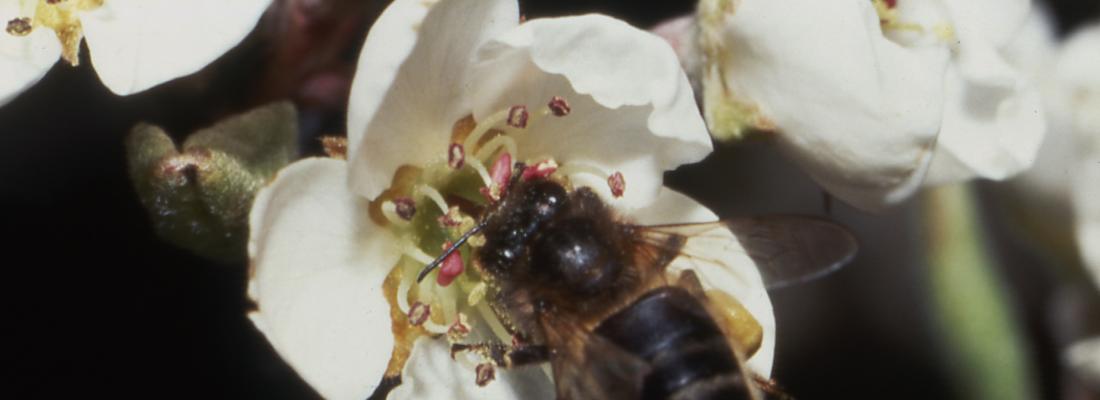Agroecology Reading time 5 min
Phytopharmacovigilance: the effects of diamides on honey bees
Published on 03 April 2019

Chlorantraniliprole and its adverse effects on the domestic honey bee…
In the absence of sufficiently pertinent official methods to characterise the sublethal effects of chlorantraniliprole in detail, the European Food Safety Authority (EFSA) recommended the monitoring of its potential effects on honey bees [1]. Scientists in INRA’s Research Unit on Bees and the Environment have now demonstrated that its effects persist in domestic honey bees following a single exposure to a non-fatal dose. In the laboratory, impaired movements occurred soon after exposure to chlorantraniliprole and despite an apparent remission, a relapse was seen one week later [2]. The scientists showed that chlorantraniliprole acts on the calcium release channels (or Ryanodine receptors – RyR) in honey bees, as in all insect species targeted by its use. Its mode of action is complex as it also causes a blockade of the voltage-gated calcium current (CaV) involved in excitation of the muscles and brain. The RyR orchestrate the mobilisation of calcium in the neurons and muscle and cardiac cells, where they drive muscle contractions and neuronal plasticity. They are present throughout the body; for example in the eyes, antennae or blood cells. The scientists were able to show that the toxicity of this insecticide depended on the route of exposure: the abdomen and antennae were much more sensitive than the thorax. A coupling of in vitro cellular methods and behavioural approaches should be able to better anticipate sublethal effects that have not yet been detected in honey bees using the current, standard methods employed by toxicologists. Indeed, the OECD and EFSA are already planning the rapid development of tests involving these approaches.
… and human health?
In view of the recent bans on neonicotinoids in Europe, recommendations concerning the field use of diamides may increase “mechanically”, notably in the context of vegetable and tree fruit crops. Recent studies on the honey bee have suggested that enhanced phytopharmacovigilance close to these crops may become necessary. Through contacts with networks of bee-keepers, it may be possible to identify any harm caused to colonies at an early stage. However, the attention given to this class of insecticides is not limited to the health of pollinating insects. Research by INRA and the Department of Physiology at Debrecen University in Hungary has indeed raised questions as to the safety of these compounds in humans affected by neuromuscular diseases of genetic origin [3, 4].
1 - EFSA (2015). Conclusion on the peer review of the pesticide risk assessment of the active substance chlorantraniliprole - European Food Safety Authority. EFSA J, 11: 4302.
2 - Kadala A., Charreton M., Charnet P. & C. Collet (2019). Honey bees long-lasting locomotor deficits after exposure to the diamide chlorantraniliprole are accompanied by brain and muscular calcium channels alterations. Sci Rep, 9: 2153.
3 - Csernoch L., Nánási P. & J. Almássy (2019). Safety concerns of diamide insecticides. Toxicol Sci, 171: 281.
4 - Magyar Z.É., Diszházi G., Péli-Szabó J., Szentesi P., Collet C., Csernoch L., Nánási P. & J. Almássy (2019). The diamide insecticide chlorantraniliprole increases the single-channel current activity of the mammalian skeletal muscle ryanodine receptor. Gen Physiol Biophys, 38: 183.
